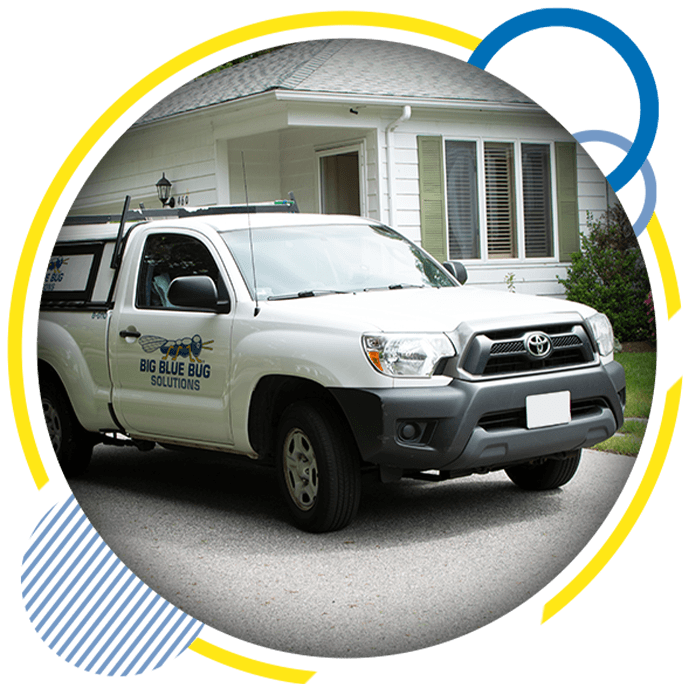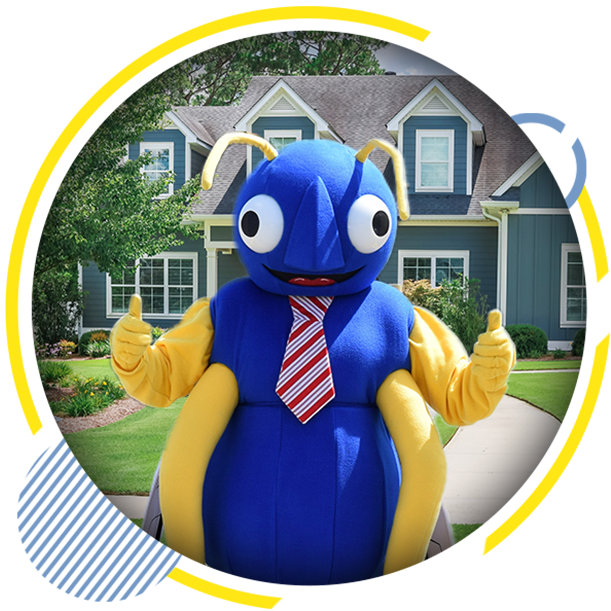
Struggling With Nuisance Wildlife Around Your Southern Maine Business?
Maine—the way life should be. Animals think so too. If you own a business in Southern Maine, you know that animals will visit you. Wildlife and Maine go together. The good news is, most of the time, the animals that come onto your property aren't a problem. In fact, some animals can make your property more appealing to your customers. Kids love to watch squirrels, chipmunks, and even the occasional raccoon, but when animals become annoying, it is best to do something about them.
Are you struggling with nuisance wildlife? Do you know the frustration of having animals cross the line and do things they shouldn't? If so, you're sure to find this article helpful. We're going to look at several common wildlife pests in Southern Maine that have the potential to create problems for your business and show how wildlife control services are sometimes needed to stop nuisance wildlife. We'll equip you with some extremely helpful DIY tips if you want to tackle this problem yourself and also tell you how your Southern Maine pest control professionals can help.
Types Of Problematic Wildlife In Southern Maine
We have quite an assortment of wild animals in our Southern Maine service area. Most of them don't cause much trouble for business owners. The few that can create issues for your business vary in their ability to present problems.
Moles: These scary-looking animals are not considered wildlife pests. They fall into the lawn pest category. As ground-dwelling insectivores, they rarely come above ground to cause trouble for businesses in ways other wildlife can.
Birds: Certain birds are common pests, such as pigeons, starlings, swallows, and Canadian geese, but they're not considered wildlife pests. These animals require bird control, trapping, and deterrents and are in a special category.
Bats: These are proper wildlife pests. They get into structures, contaminate infested areas with their waste, and are controlled with wildlife management products such as traps and one-way doors.
Opossums And Raccoons: These two are notorious wildlife pests. They are mischievous scavengers that find harborage underneath structures and sometimes inside attics and storage rooms. They don't readily get inside structures, but they can.
Skunks: While mostly docile animals, skunks may decide to hit you with some pepper spray (so to speak). When they discharge their spray, it can drive customers and employees out of your business.
Squirrels: These critters are a joy to watch but not a joy to have around your business. They damage screens and get into attics.
Rats: These rodents come in two flavors: ground dwellers and aerial dwellers. Norway rats are brown rats that prefer to live in ground burrows and damp sewer culverts. Roof rats are black rats that prefer cavities in trees and the attics within man-made structures. Once inside, they can explore every inch of a structure.
Mice: These are the worst of all animal pests. They grow large populations, damage structures, damage belongings, spread illness, and chew on wiring. Of all mouse species, house mice create the most problems.
Okay. So, what is wildlife? When considering what to do about wild animals, it helps to know which are considered nuisance wildlife pests. The top three are bats, squirrels, and raccoons. Occasionally we're called in to deal with skunks and opossums. As for the other animals listed above, they fall into other service categories, such as lawn pest control, bird control, and rodent control.
The Dangers Nuisance Wildlife Brings To Businesses
We are not going to spend too much time on this topic but it is essential to consider the risks associated with nuisance wildlife. Wild animals are—well, wild. It is hard to know what they're going to do. Even squirrels, which are mostly harmless, can turn on a human and attack. In a commercial environment, unpredictable behavior like this threatens employees, customers, and your bottom line. An animal attack can lead to litigation.
In some ways, wildlife is very predictable. You can expect animals to do some or all of the following:
- Get into trash receptacles and spread trash around your property
- Claw, scratch, and gnaw on building materials
- Leave urine and droppings around your business, or worse, leave waste on the inside of your business
- Bring ticks and fleas onto your property or into interior spaces
- Scare people
- Create a strong odor that could bring business to a grinding halt
- Bite or scratch people
- Leave black marks on building materials
- Spread germs
- Damage stored goods
It is always best to get ahead of wildlife problems and keep these beautiful animals from becoming pests. Let's take a look at how wildlife management works.
Five Practical Wildlife-Prevention Tips
Now that you understand what you're up against, we can turn our attention toward dealing with these pests. These five tips could provide all the protection you need. Wild animals are only motivated by food, water, and harborage. You can control these factors, and in turn, control potential wildlife pests.
1. Remove Food Options: Wild animals eat many things. When considering food sources, you need to know all of the food sources these pests may eat. Here are some tips for removing food as an attractant for wildlife pests.
- Store garbage in covered receptacles that cannot be easily knocked over by a mid-sized animal, such as a raccoon, opossum, or skunk.
- Move bird feeders well away from your exterior walls. Many animals eat seeds.
- Stay on top of cleaning up nuts and fruits that fall from trees.
- Protect garden vegetables and berries with protective fencing materials.
- Reduce bugs and bug habitats. For example: blow leaves out of your landscaping, remove dead branches, and move wood piles away from your exterior.
2. Address Water Sources: Animals need water and are strongly motivated to drink water to stay hydrated. Any water source on your property can be utilized by animals that can reach them.
- Address gutter clogs. Squirrels can drink water right out of your gutters, and the spillage of water over the side of your gutters can cause perimeter dampness and puddles near your exterior.
- Remove objects that collect rainwater. These objects are like a water dish for a pest animal.
- If you have a pond, birdbath, or some other water source that can't be removed, you'll need to consider deterrents, such as motion-activated lights that flash when animals come near.
3. Remove Hiding Places And Harborage: When animals come onto your property in search of a location to create a nest or den, it is best not to give them one.
- Trash piles, junk, construction materials, scrap metal, and other objects can provide perfect places for animals to hide. Remove unnecessary clutter to remove places for animals to hide.
- Some animals get into the voids underneath structures. It is best to seal these voids by applying fencing material.
4. Seal Entry Points: The last place you want animals to create a nest or den is on the inside of a structure on your property. They can do this in sheds, storage lockers, barns, garages, and your main business structure.
- Use expanding foam for a cheap fix. Expanding foam is perfect for sealing certain gaps and holes.
- Use a caulking gun for a long-lasting and better-looking fix. When you're concerned about curb appeal, this is the product to use.
- Use metal flashing and hardware cloth to bolster your defenses when animals are scratching or gnawing to get inside.
- Make sure all protective materials are in place and in good condition, such as weatherstripping, door sweeps, screens, and vent covers.
5. Remove Routes: Some animals need a route to get inside your business. Here are a few ideas to help you remove potential routes.
- Trim tree branches away from your roofline.
- Insert wire mesh into the downspouts of your gutter systems to allow water to run out and keep pests from running up.
- Remove vines, lattices, and other things pests can scale to reach your roof.
- Put spikes on wires that touch your exterior walls. Squirrels use wires like a superhighway. Those spikes will stop them in their tracks.
Do you see how it works? These natural methods work to naturally deter pests from being active on your property and keep them from getting into structures on your property without any need for wildlife control products. When wild animals get into your property or create lots of trouble in your yard, it is best to get professional wildlife removal.
Professional Wildlife Control For Southern Maine Commercial Space
At Big Blue Bug Solutions, we don't just provide solutions for bug problems in Southern Maine. We have trained, experienced, and incredibly talented wildlife technicians on our wildlife pest control team. We can solve even the most challenging wildlife control issues. No two businesses are quite the same, and wildlife can present more of a threat to businesses with vulnerabilities. Our goal is to humanely remove wildlife from your property and structures on your property and provide recommendations to prevent future problems. Along with recommendations, we offer assistance with ongoing wildlife and pest management. We take the guesswork out of protecting your business from wildlife threats and ensure you're always ready for inspections and audits.


chECK oUT THE bUZZ!
Unbeatable Pest Control, Unmatched Reviews
-
"They have exceeded expectations. Highly recommend."Alley Bergemann, called before arriving on the day of the appointment, showed up on time, and took care of re-baiting the bait traps as needed. She is patient, polite and answered a few questions I had, all with a pleasant demeanor.- Jonathan P.
-
"Always been amazed by the competence and professionalism of this company."
Their man, Elijah was a gentleman and very knowledgeable professional. He took the time to carefully listen to me when I explained where the ant infestation was found. He explained clearly what he was going to do to address the issue.
- Pete M. -
"GREAT company!"The Big Blue Bug Solutions is a GREAT company with very helpful, courteous technicians. This a company that actually helps you with your problems and not try to sell you something you don't need. I am very pleased, and NO, I have no relatives that work at- Robert M.
-
"Knowledgeable, accurate and incredibly pleasant."I just cannot believe the most amazing experience customer service experience I had with Laura who could not have been more knowledgeable, accurate and incredibly pleasant. It is very rare I leave a review but this encounter deserved one!- Kimberly H.
-
"Always very polite and accommodating."We’ve been using Big Blue Bug for pest control for many years and have been very satisfied! Vince visited today for our regular check in and he is an excellent technician. Thanks, BBB!- Stacey C.
-
"Knowledgeable, respectful, courteous!"
I highly recommend Big Blue Bug Solutions - first - for their customer service. They are professional and efficient and always try to fit me in at a time that is convenient for me. Second, RODNEY IS THE BEST TECHNICIAN!!!!
- Meredith L. -
"Our first service was a great experience!"Peter called to let us know he was on his way and arrived as scheduled. He was very knowledgeable and setup a comprehensive array of traps in each target area to begin capturing the pests and put an end to our troubles.- Mike H.
-
"Personable, friendly, and knowledgeable!"Shoutout to our tech, Jeremy Cote, who has been servicing our bakery in Richmond and has helped us maintain a pest free environment. He is personable, friendly, and knowledgeable. We highly recommend big blue bug to friends, family, and customers!- Becky M.


WE'RE AVAILABLE
EVERY DAY, ALL DAY,
365 DAYS A YEAR
Say goodbye to automated systems! Our team is at your service round the clock, every single day of the year, guaranteeing a personalized and immediate response to your queries.
